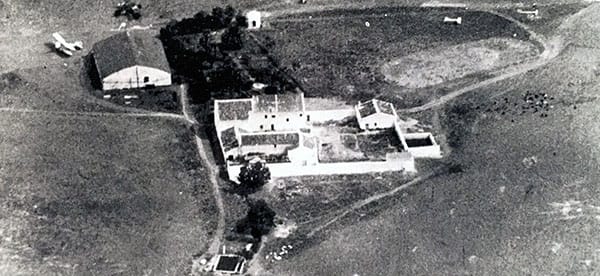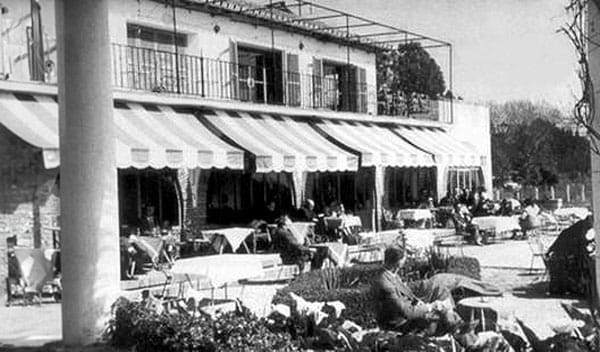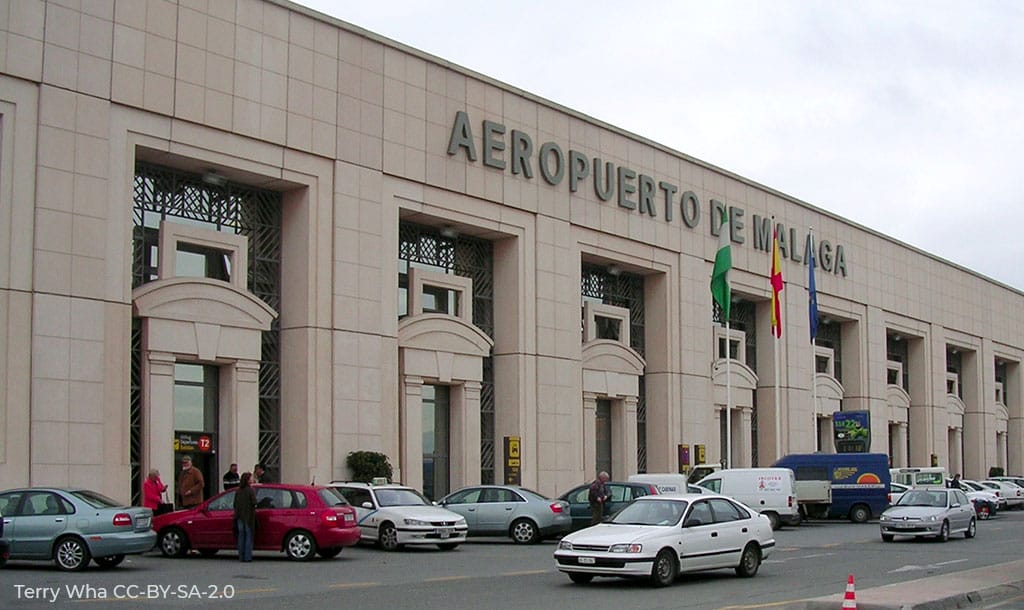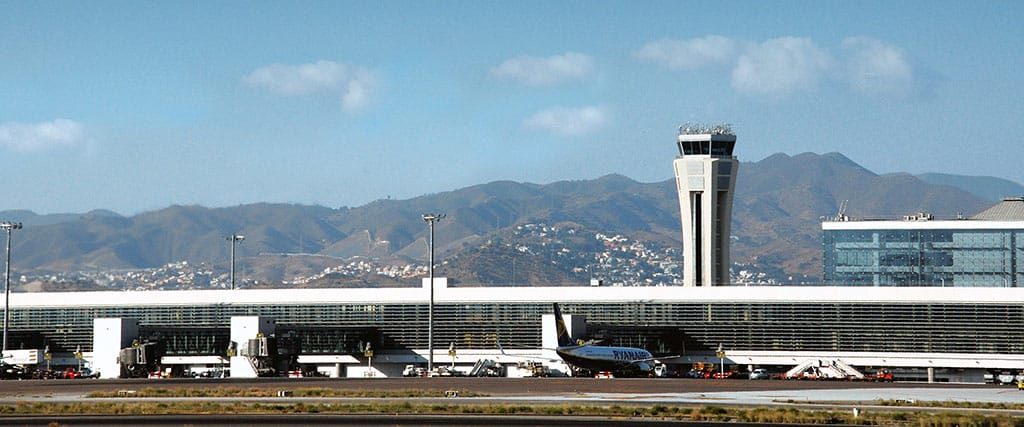At the beginning of 2023, AERTEC’s airport planning team excitedly began drafting a very special project: the functional design of Malaga airport, led by Spanish airports managing entity Aena.
The project entails designing the future of our closest airport. Our company was born “around” this airport more than 25 years ago and it was in El Rompedizo where many of the professionals who belong to AERTEC have trained and gained experience.
“It is very important to develop architectural projects that can help us in this task of achieving sensible well-being without endangering the world. And to this end, society must understand that we must invest in these aspects to really prepare for a future, a decent future.” / Iñaki Ábalos, 2015
The project mainly consists in calculating the needs of the airport’s main systems with the year 2050 in mind: airfield, transit area, terminal area, landside development and access ways. Subsequently, shaping those needs by “imagining” how those systems should grow and develop. A full-blown challenge.
That is why it is worth taking a look at the starting point, the beginnings of the current Malaga – Costa del Sol airport, which already processes more than 20 million passengers each year. It is always important to know “the why” of things. Knowing history helps us, undoubtedly, to observe the “playing field” in which we propose our solutions.
From Latécoère to Ryanair. 100 years of air transportation in Málaga.
The location of the oldest peninsular airport that maintains its original location arose from the intuition of an intrepid pilot in his desire to find safe landing areas on the route from Toulouse to Casablanca (see post by Vicente Padilla). Ever since that moment – remember, this is back in 1919 – the activity around such an improvised landing zone in El Rompedizo farmhouse has been frenetic during these more than 100 years of history.

After the first landing at Latécoère and until the outbreak of the civil war, the French aviator’s airlines had a simple hangar that served as shelter for passengers, mechanics and crew. In 1932 the state acquired the property, and the airfield became considered a national airport, until it became an air base in 1937.
In 1946 the airport opened to national and international traffic and all passenger services were provided in the air base until 1948, when the first civil passenger station was inaugurated. The latter was the work of Luis Gutiérrez Soto – the architect of Barajas airport – who had carried out the project as an Air Force Captain.
Some images of passengers enjoying the terraces of the Gutiérrez Soto building portray the benefits of Malaga’s climate. Obviously, current safety restrictions make it impossible to enjoy air travel in this way again. But undoubtedly, these open-air passenger terminal solutions deserve to be reexplored, to return in some way to these historical beginnings.

At the end of the 1950s, the onset of a phenomenon would completely transform the appearance and scale of Malaga airport: mass tourism. The growing arrival of European tourists who came – mainly to Torremolinos – to enjoy the newly created paid vacations required a comprehensive remodeling and involved the construction, in just 14 years of 3 passenger processing buildings, as well as a completely renovated airfield.
In 1958, the existing 1,200-meter runway was paved and, just one year later, an extension to 3,200 meters was approved and carried out, as well as a taxiway parallel to it. From that moment on, the area of core of ground operations was relocated to coincide with the center of the runway, approximately a kilometer and a half north of the previous terminal area. A new aircraft parking lot and control tower were built at this location.
As for the terminals, from 1958 to 1965, several Air Ministry ATUCAS-type barracks modules were built. In 1968, a provisional international traffic terminal was built, and finally, the execution of the so-called modular terminal for non-regular traffic – which later came to be Terminal T1 – was inaugurated in June 1972. The design of architect Eduardo Aguirre will be identical to that of the terminal buildings of the airports of Palma, Girona, Alicante and Ibiza.

In the eighties, persistent growth in air traffic led to the construction of a new terminal building, which was inaugurated in November 1991 under the name of Pablo Ruiz Picasso. The terminal – designed by architect Ricardo Bofill and which in the future would be known as T2 – is annexed to the Aguirre terminal through an intermediate module, sharing integrated operations.
Likewise, to complete the terminal area and solve the lack of parking spaces, a new parking facility was built and came into service in 1995 located in front of the Picasso terminal.
As the new millennium arrived, Aena began an ambitious process of airport expansion and remodeling. The Málaga Plan was created, the objective of which was to boost the airport’s capacity to the maximum, with a design horizon, according to the Master Plan updated in 2006, of 20 million passengers by 2017. Among its most significant actions were the new passenger terminal, called T3, the new parking building, adjacent to the existing one, the commuter station connecting the airport with the city center and with Fuengirola by train and a significant expansion of the airfield.
The new T3 terminal, inaugurated in 2010, had to operationally join the existing ones, which are now called T1 and T2 respectively. To do this, a transition bay was built between T2 and T3, which allows internal circulation through the three buildings. The complex forms a single terminal area with capacity for more than 9,000 peak hour passengers. At the same time, in front of T1, a new parking building was built with the capacity to house 2,500 vehicles.
The new airfield consists of a new 3,090-meter-long runway, a parallel taxiway, four rapid exit lanes and an apron of more than 150,000 square meters that allows for a considerable aircraft parking capacity.
If we leave out the two major hubs in Spain, Adolfo Suárez-Barajas and Josep Tarradellas – El Prat, today the Málaga-Costa del Sol airport is the main tourist gateway to our country. The estimates made still show significant growth. Everything indicates that El Rompedizo will reach its peak development around its 125th birthday. It will be nice then to say that AERTEC contributed in an essential way to part of its history.
Information collected in this post comes practically entirely from the bibliography that engineer Mr. Luis Utrilla Navarro has been compiling for decades on Malaga airport. This brief summary is nothing more than a tiny sample of the enormous amount of information that can be found in Utrilla’s books. In fact, I encourage anyone who is curious to know every last detail of the Malaga airfield to read this bibliography. Two books in particular stand out:
- Utrilla Navarro, Luis (1999). El aeropuerto de Málaga, ocho décadas de historia del transporte aéreo. Ed. Aena. Aeropuerto de Málaga.
- Utrilla Navarro, Luis (2010). La arquitectura aeroportuaria malagueña. Eugénesis, estética y funcionalidad del nuevo edificio terminal del aeropuerto de Málaga. Ed. Aena, Plan Málaga.



